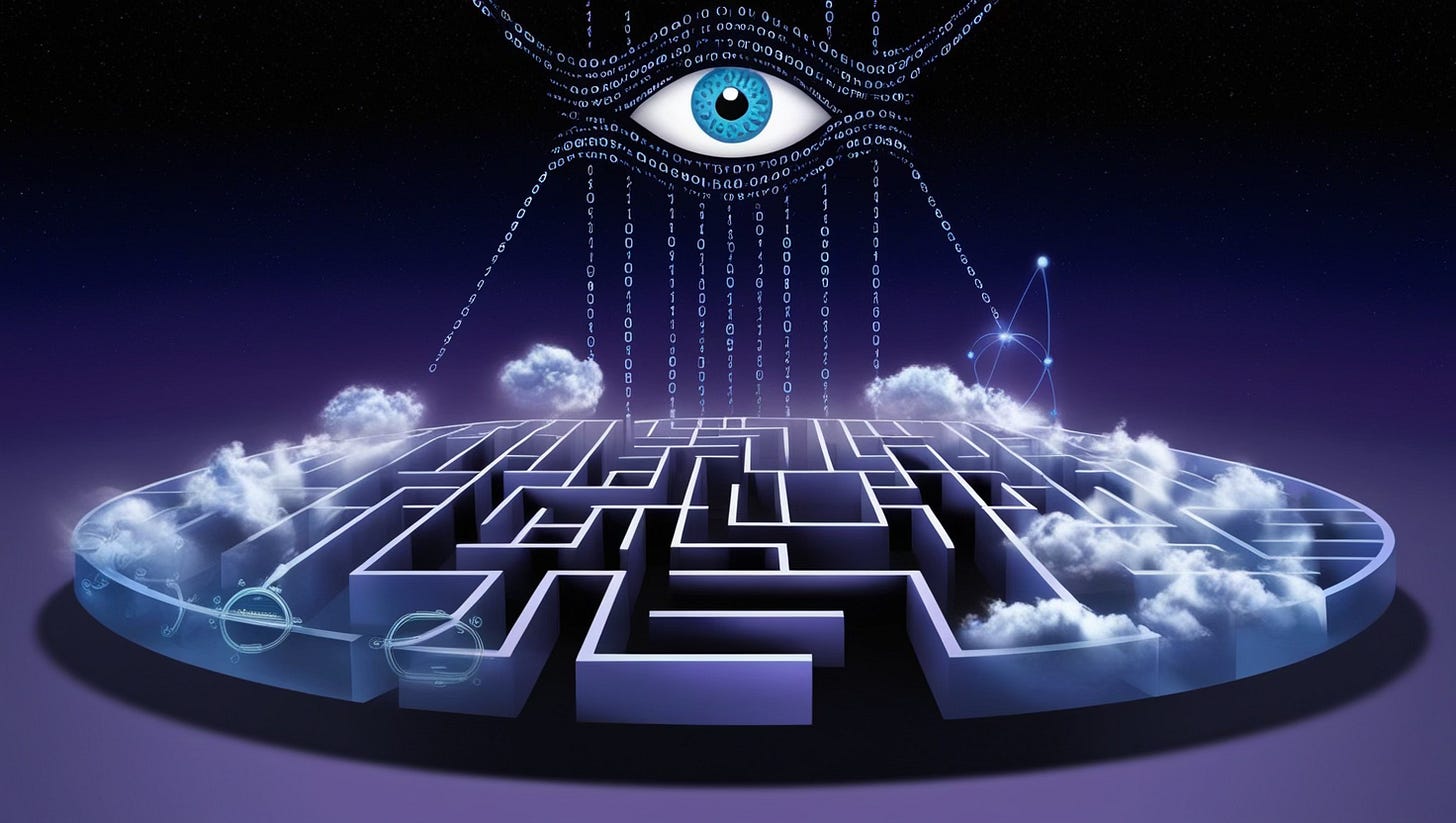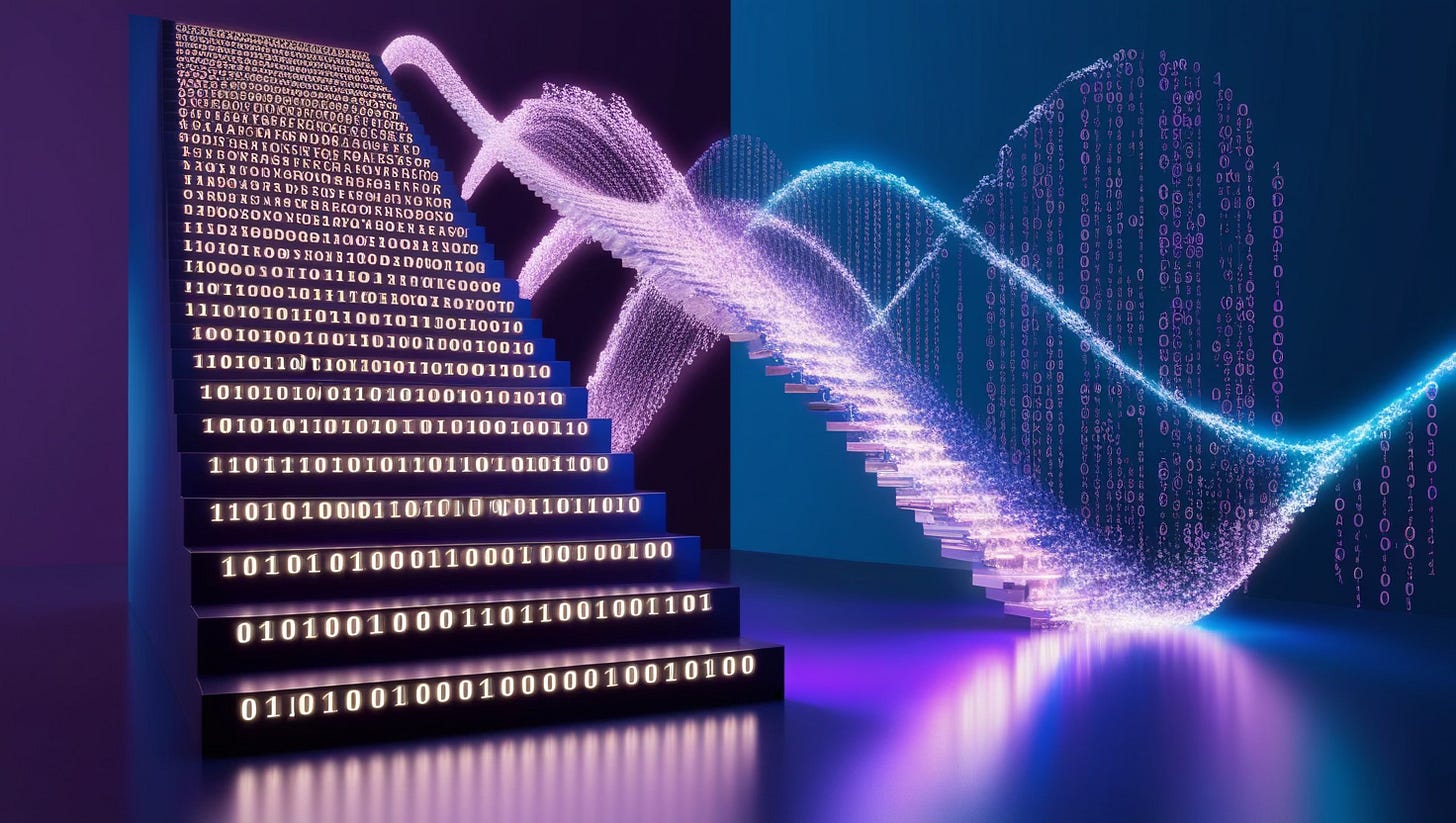Picture a mouse in a maze. It explores methodically, hitting dead ends, backtracking, learning from failure until it finally discovers the correct path. This is how our classical computers solve problems - sequentially, deterministically, through brute force trial and error. Now imagine instead being able to hover above the maze, seeing all paths simultaneously, the solution emerging not through exploration but through the natural collapse of possibilities into certainty. This is quantum computing - not just a faster way to solve problems, but a fundamental shift from navigation to perception.
While the world fixates on AI's latest party tricks, this quieter revolution builds momentum. We're not just creating faster mice for our computational mazes; we're learning to transcend the maze entirely by processing information the way the universe does.
From Sequential to Simultaneous
Our classical computers, despite their sophistication, remain glorified abacuses - incredibly fast ones, but still bound by the binary logic of yes/no, 1/0. My explorations in AI across writing, music, and visual arts have revealed their fundamental limitation: they can only see what they've been shown, process what they've been fed, one step at a time.
Nature harbors no such constraints. At the quantum level, reality is less a sequence of events and more a symphony of possibilities, all existing simultaneously until observed. Quantum computing doesn't just replicate this phenomenon - it harnesses it.
The Materials Breakthrough: When All Paths Converge
The first quantum advantage will emerge in materials science, creating a fascinating feedback loop. Traditional computers approach material design like our mouse in the maze - testing combinations one by one, learning from each failure. Quantum systems perceive the entire landscape of atomic possibilities at once which could result in:
Superconductors that glimpse all possible electron configurations simultaneously
Energy storage materials that emerge from exploring countless quantum states in parallel
Metamaterials that optimize their properties across multiple quantum dimensions at once
Quantum-aware materials that naturally interface with quantum information systems
Each breakthrough enables more powerful quantum computers, which in turn accelerate materials discovery - a self-reinforcing cycle of innovation.
Reality's Development Environment a potential timeline of coming innovation
The implications ripple across every domain where complexity meets computation:
Energy & Materials (2025-2030)
Instead of navigating the maze of molecular combinations, quantum systems perceive optimal configurations for:
Room-temperature superconductivity
Revolutionary energy storage densities
Materials that heal themselves by accessing quantum probability fields
Metamaterials that manipulate fundamental forces
Biological Systems (2028-2035)
From sequential trial and error to simultaneous cellular simulation:
Drug discovery that sees all molecular interactions at once
Disease pathways mapped across quantum probability spaces
Metabolism understood as a quantum information network
Integration with platforms like Cytosolve, transforming from maze-running to maze-perceiving
Space & Communications (2030-2040)
The Continuum concept exemplifies our shift from navigation to perception:
Quantum-entangled communications that don't traverse space - they transcend it
Propulsion systems optimized across quantum possibility spaces
Networks that exist in superposition across orbital configurations
Sensors that detect gravitational waves by perceiving quantum space-time fluctuations
Intelligence & Computation (2030-2040)
Moving from sequential learning to quantum understanding:
Neural networks that process information in nature's native tongue
Optimization problems solved through quantum perception rather than iteration
AI systems trained on reality's underlying grammar
Algorithms that collapse years into moments through quantum parallelism
Beyond the Quantum Horizon
As these capabilities emerge, we approach what I call the "quantum comprehension boundary" - where classical intuition dissolves into quantum possibility. Like our mouse trying to comprehend the view from above the maze, we face questions that challenge our traditional frameworks:
When consciousness can be mapped across quantum states, what becomes of free will?
If information can exist in superposition, what happens to cause and effect?
When we can perceive all paths simultaneously, what defines choice?
Societal Quantum Leap
The transformation will begin subtly, like the first ripples of the digital revolution:
Economic Evolution
Industries emerging from quantum possibility spaces
Markets optimized through simultaneous scenario perception
Energy economics transformed by quantum material insights
Scientific Transcendence
Discovery driven by quantum perception rather than sequential investigation
The boundaries between observer and observed blurring
New fields emerging at the intersection of classical and quantum understanding
Philosophical Expansion
Determinism yielding to quantum probability
Reality understood as information in superposition
Consciousness explored as a quantum phenomenon
Reality's Next Compiler
We're not just building better tools - we're rewriting the fundamental interface between human intention and physical manifestation. The quantum paradigm shift represents our first steps from being mere users of reality's operating system to becoming its kernel developers.
In a decade, quantum computing will make today's AI excitement look like we were celebrating the invention of the calculator while standing on the brink of discovering mathematics itself. While artificial intelligence enhances our ability to process information within classical constraints, quantum computation allows us to step outside those constraints entirely - like a two-dimensional being suddenly grasping the concept of depth across a Z axis.
The most profound implications transcend our current conceptual compiler. We're not just optimizing our algorithms anymore; we're learning to think in reality's native programming language, where probability waves replace binary choices and entanglement makes a mockery of our classical notion of separation.
As we step into this role of universal developers, our greatest challenge won't be technical but philosophical: understanding that with root access comes root responsibility. Though I suspect the universe's code base might need better documentation than "42."






